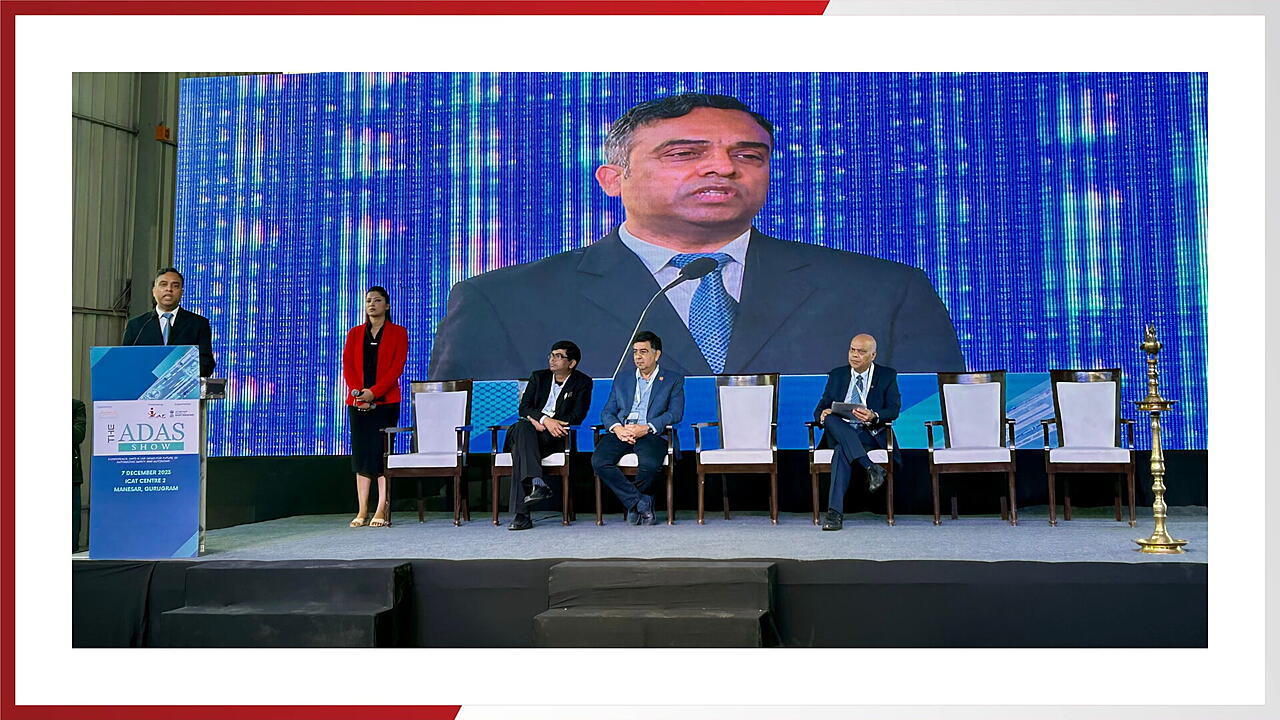
The ADAS Show, held at International Centre for Automotive Technology (ICAT) Manesar, hosted more than 45 tech companies showcasing the cutting-edge in the world of Advanced Driver Assistance Systems (ADAS). The primary reason being the government’s push towards improving road safety, the exposition showcased a lot of improved tech on ADAS features like automatic braking and radar guided cruise control being demonstrated on the track. The displays were able to further add to used cases by adding human dummies as test subjects for testing the capabilities of camera based systems.
While the demonstrations themselves are interesting, the deliberations on the opportunities and challenges of ADAS implementation gathered more interest. These discussions pointed out that the automotive industry in India is the centre-of gravity for all other industry, and propels & facilitates growth in all other areas of the economy. The ecosystem of the ADAS development in India will be supported by a host of software and hardware suppliers, but priority must be to develop these in the country itself on all levels.
“ADAS will contribute to increasing road safety, which is the most important aspect for the government. India witnesses 4.5 lakh accidents per year, and more than 1.5 lakh fatalities per year. The government is fully cognizant for the measures that can improve road safety in terms of vehicle features and road engineering” stated Dr Hanif Qureshi, Joint Secretary, Ministry of Heavy Industries.
The development of new systems, and also the testing required to proof and form standards, this journey should be in sync with the rest of the world. “We cannot just copy the standards and regulations from Europe, US or Japan. Our road conditions are too dynamic. Another challenge is to understand how ADAS can be helpful in buses and trucks to improve road safety” he added. The industry can help by producing these technologically advanced vehicles, that regulatory has to fast track the regulation phase
The majority of road accidents can be attributed to human error. These safety systems hence can be utilised to improve upon road safety. However, since Indian roads conditions are the most dynamic in the world, the fool-proof working of these systems will still take a lot of data acquisition and processing before they can be implemented efficiently.
“When technology gets developed across the world, it takes a while to adapt to India. We have so many different parameters and challenges for the development of most systems. Similarly the journey of ADAS is going to be difficult before we can fully rely on it” states Saurabh Dalela, Director, International Centre for Automotive Technology. “Considering Level 1 and 2 ADAS systems, there is a decent amount of infrastructure available already. However, Level 3 and above will take a lot of time, which’ll require more infrastructure engineering. Happily, the government is already discussing for the preparedness for Level 3 autonomy. The massive amount of data being generated, the cybersecurity of this data is going to become a huge challenge if the regulators get late in catching up. Collaboration is important, and this includes the academic institutes as well” ” he added.
The development of the supply chain in the country is a crucial aspect as well. This is very important for the cost-effectiveness of introducing expensive ADAS tech in affordable vehicles. “We are stepping into the perception management of the cognitive ability of a human being. The use case definition will be difficult for the regulatory perspective. Unless localised, the penetration of ADAS components will be difficult because it is an expensive technology” stated Tapan Sahoo, Executive Director, Maruti Suzuki India. One critical suggestion he mentioned was that road accident data analysis can further help component suppliers develop better products in smaller timelines. This also includes awareness about the benefits of ADAS systems so that customer’s demand such tech to be a standard fit in vehicles.
This problem was further highlighted by Ganesh S Rao, Director & Head R&D ADAS, Continental. He said “56% percent road accidents cannot be addressed by the current level of ADAS preparedness present in the Indian vehicles. More open databases for corner cases need to be opened in India so that more agencies can work on it”.
Overall the show was able to focus much attention on the challenges faced by ADAS systems implementation in the country, which includes road engineering, the expensive development and manufacturing of ADAS components, defining a regulatory roadmap for the testing and approval of these systems and the need for collaborations for the efficient development of these systems.
Also Read